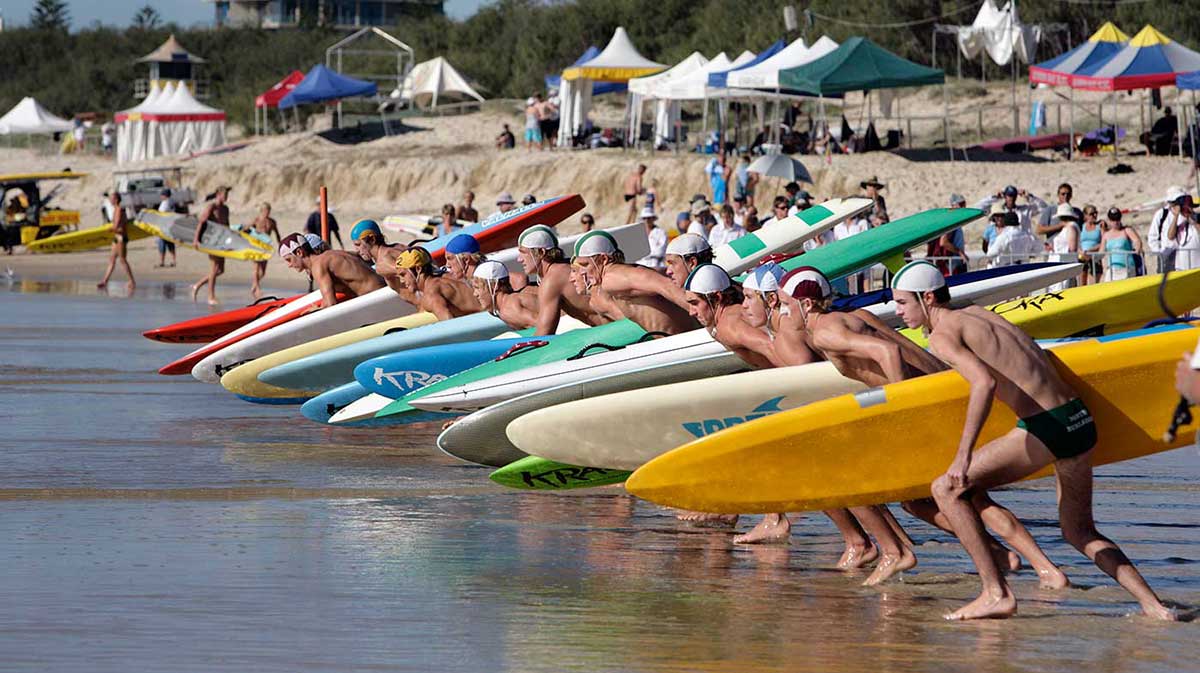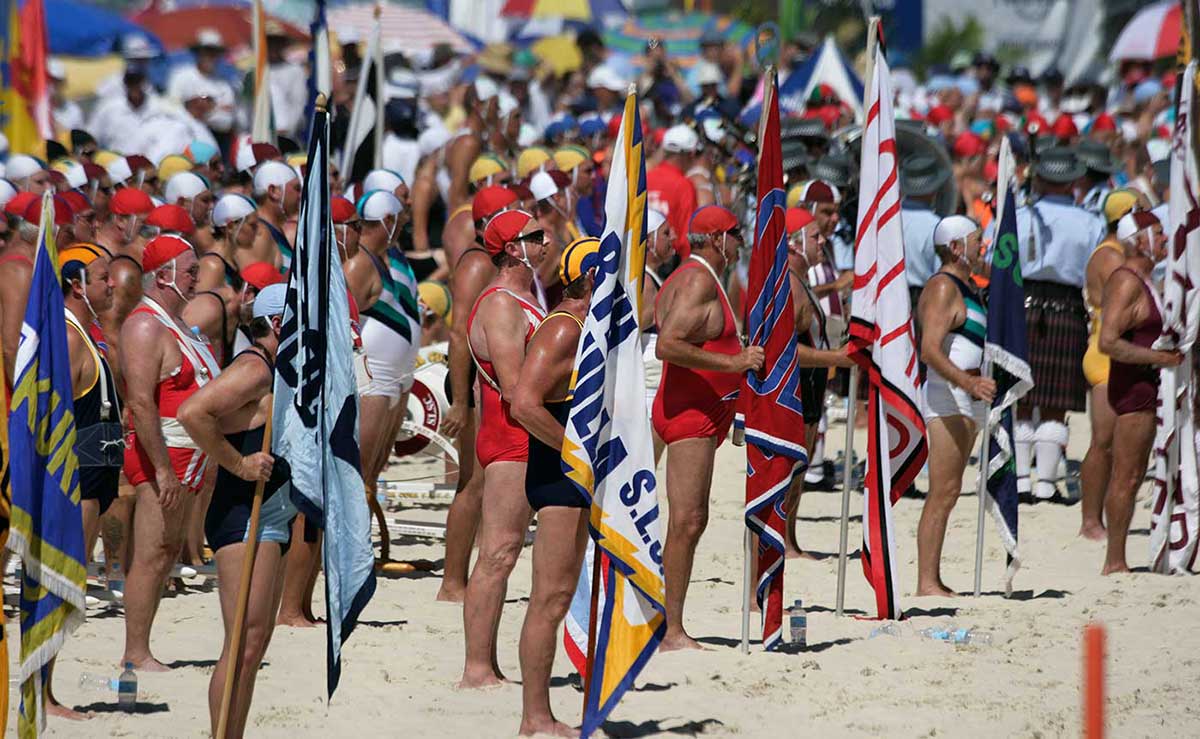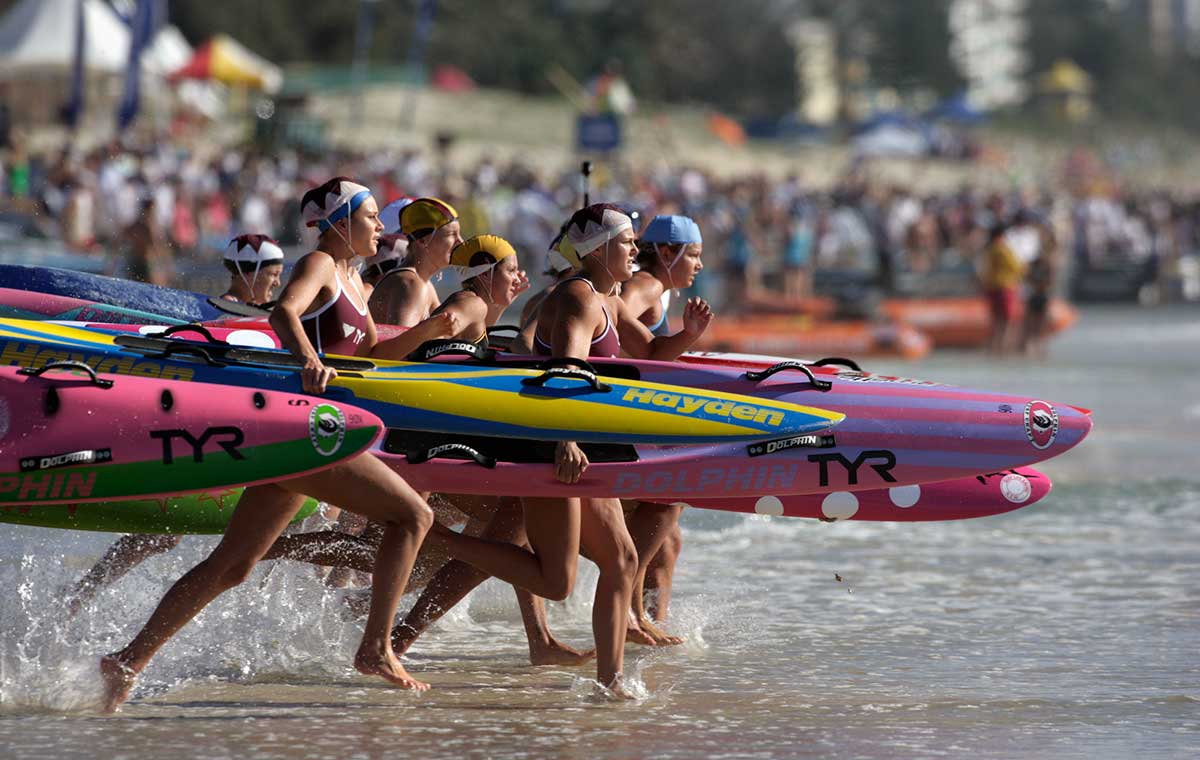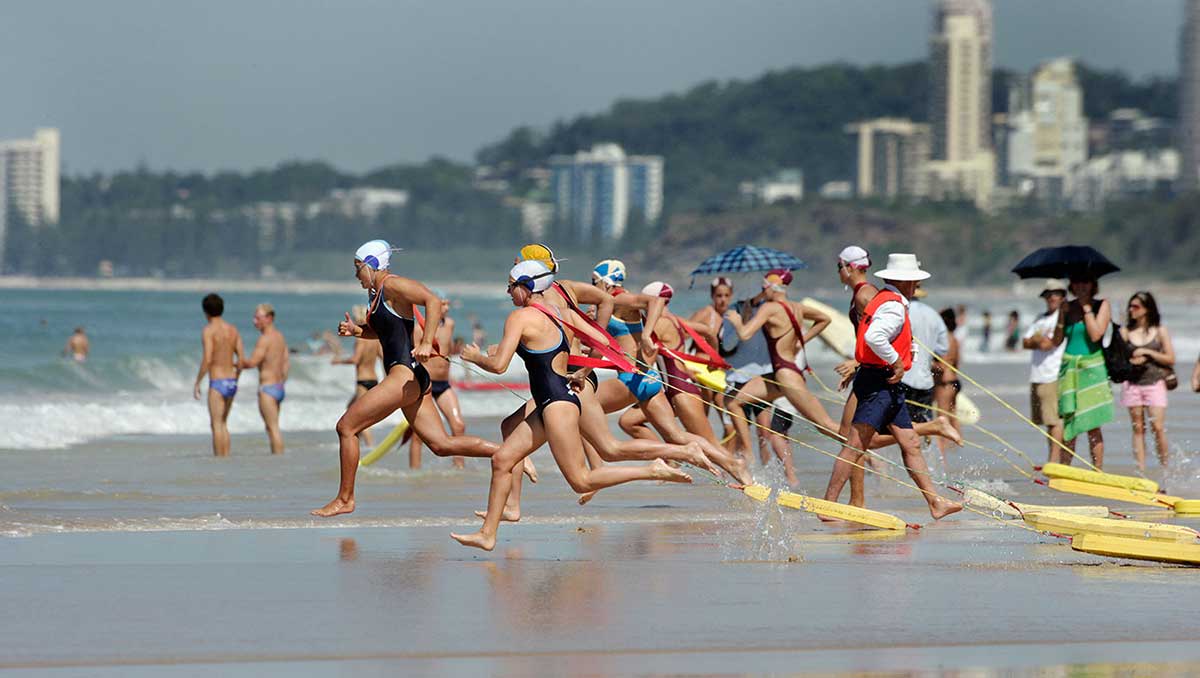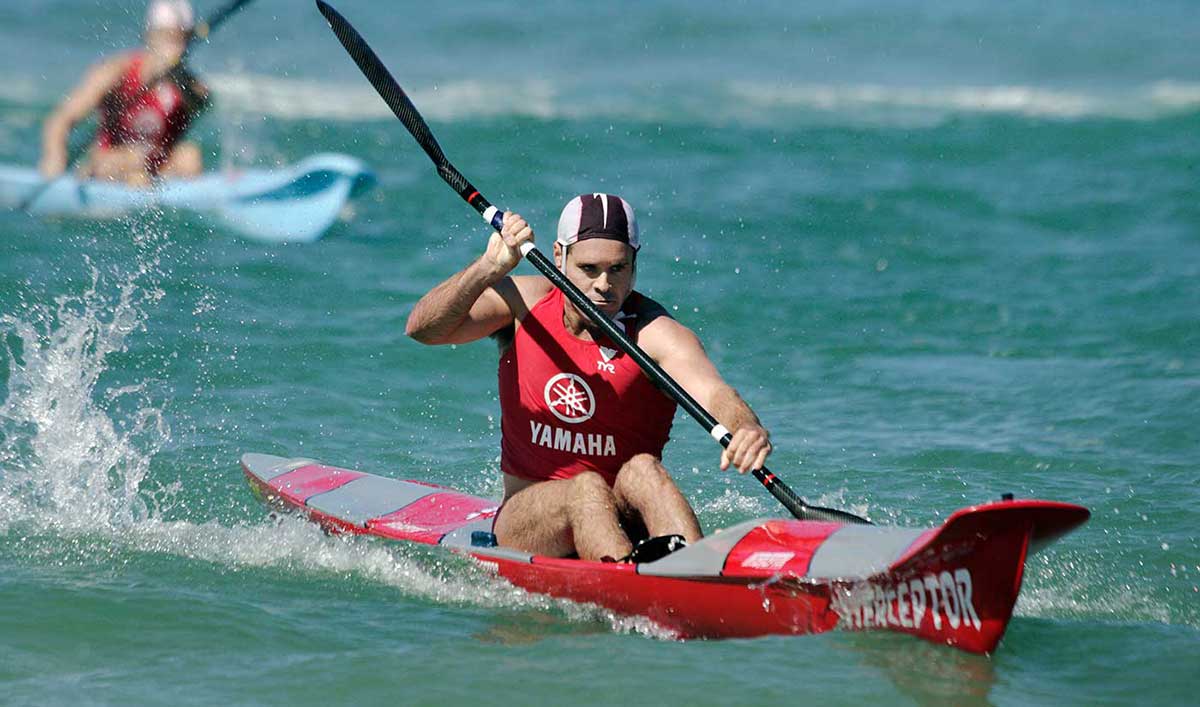Surf lifesaving consists of two main activities – saving lives and competition. Since the 1920s Surf Life Saving Australia has emphasised the humanitarian aspect of the organisation but the reality is that many lifesavers join for the social and sporting benefits.
Competition on and off the beach is fierce, enabling surf lifesavers to practise their skills and improve their fitness. Members compete at all levels, from intra-club to regional, national and international.
The sport of surf lifesaving combines history with modern sporting practice. The surfboat race, belt race, rescue and resuscitation, and the march-past are still contested. Although no longer part of current practice, they honour the teamwork, friendship and traditions of surf lifesaving. The inclusion of individual events and the acceptance of professional athletes reflect broader cultural changes.
The Surf Life Saving Association handbook, 1927:
With the object of stimulating enthusiasm in the work of surf life-saving, interclub surf carnivals are held regularly during the summer months ... There are hundreds of entries at a single carnival, and the training keeps the members physically fit and thoroughly efficient.
The thrill of the carnival
Soon after surf lifesaving clubs were established, they held carnivals in which lifesavers would test their skills. Surf carnivals also reassured the public of the lifesavers' discipline and competence.
Tens of thousands of people attended carnivals in the 1920s and 1930s and they were also staged to commemorate royal visits, the sesquicentenary and the opening of the Sydney Harbour Bridge.
Early carnivals included novelty events such as pillow fights, chariot races and a tug of war but these were phased out due to concerns they would undermine the serious nature of surf lifesaving.
Today the Australian Surf Life Saving Championships are surf lifesaving's premier event, attracting up to 8,000 competitors.
One of the greats
Bob Newbiggin was a champion swimmer, breaking the Australian Junior 110-yard record in 1937 and competing in the Empire Games the following year. But it was in the surf that he became a legend.
Newbiggin dominated surf races before and after the Second World War. Always a powerful swimmer, it was his ability to pick the best wave and ride it to the beach that won him many races.
A break from war
Australian armed forces serving overseas often held their own surf carnivals. In places such as Gaza, Tel Aviv, the Solomon Islands, New Guinea, Vietnam and Iraq, soldiers have competed in surf races, rescue and resuscitation events and the march-past.
Sport was encouraged as a leisure activity for off-duty soldiers but surf lifesaving, with its emphasis on discipline and drill, was considered to be particularly suitable.
Competing with sharks
In January 1949 Raymond Land was competing in the rescue and resuscitation event at a surf carnival. As beltman, he swam out to rescue the 'patient'.
Twenty metres from the buoy, he signalled that he was in trouble. The line was caught on a rock so the patient and the number three linesman swam to his aid. They had almost reached him when a shark attacked. Raymond was taken to shore on a surf ski but died from his injuries
The ultimate event
Hayden Kenny won the first Australian Ironman title at Coolangatta in 1966. Adapted from an American event, the ironman includes a surf ski leg, board paddle and swim, with beach sprints between sections.
In the 1980s the ironman event provided a much-needed boost to surf lifesaving, attracting corporate, media and public interest. A 42-kilometre ironman event was staged for the filming of The Coolangatta Gold in 1984 and attracted over 100,000 spectators. Guy Leech won the actual event while the reigning Australian Ironman champion, Grant Kenny, starred in the film.
The ironwoman event was introduced in 1992 and women also compete in the recently revived Coolangatta Gold event.
Ironman Grant Kenny
Grant Kenny won his first Australian Ironman title in 1980, 14 years after his father had achieved the same feat. Grant's win was remarkable because he won both the Junior and Open titles within an hour of each other.
Grant won three more national ironman titles. His success sparked the resurgence of the ironman event and promoted surf lifesaving competition.
Beyond the horizon
Allan Kennedy was one of many administrators who promoted surf lifesaving overseas. He started the first club in Cornwall, England, and helped establish the Surf Life Saving Association of Great Britain.
As part of the 1956 Olympic Games celebrations, an international surf carnival was held at Torquay, Victoria. Kennedy called a meeting of international surf lifesaving representatives and they formed the International Council of Surf Life Saving.
Surf Life Saving Australia maintains a strong influence in international surf lifesaving.
You may also like
